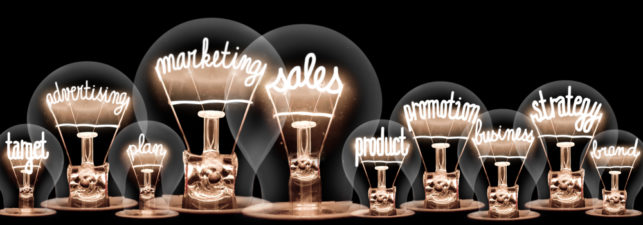Account-Based Selling and Adapting to Buying Committees of the Future (and Present)

Account-based selling is an increasingly popular strategy in B2B sales that involves targeting entire accounts instead of a single person within the company. You’ll often see this hyper-personalized sales model described as an approach that “treats every account as a market of one.”
With sprawling, cross-functional buying committees becoming more common in B2B companies, in some ways, account-based selling is being driven as much as by the customer as it is by internal sales strategy. In the past, a salesperson may have worked with a couple of key contacts and one or two primary decision-makers over the course of the sales cycle. Today, they’re more likely to face a customer buying committee comprised of a variety of diverse decision makers, influencers and other interested parties, all of whom have different priorities and needs.
As the buying committees have expanded, their demographics have also evolved, with Millennials and Gen X members now making up the majority. These buyers interact with sellers in different ways than previous generations did, underscoring just how important it is for organizations to understand who each of their buyers are, what matters most to them and how to adapt their sales targeting for maximum impact.
What Is An Account-Based Sales Strategy?
Account-based selling acknowledges the fact that it’s going to be increasingly difficult to make headway into a new account simply by focusing on one buyer or ‘lead’. Even in small-to-medium-sized businesses, buying committees have ballooned to the size of what we used to see only in enterprise-level deals.
As the “market of one” definition implies, an account-based sales strategy helps sellers adapt to this new environment by encompassing multiple channels, touchpoints and stakeholders within the prospective customer account. This is a process of surrounding the account, and it begins by identifying who the key stakeholders are and then targeting them with personalized outreach that is relevant to their roles.
To be effective and cohesive, an account-based sales strategy requires seamless alignment and collaboration across your organization, because everyone plays a part, whether directly or indirectly. For example, prospecting tactics like emails, social media engagement, webinars, research, case studies and customized reports can involve a variety of team members and functions. The overall brand experience and your company’s reputation in the marketplace are also critical to the success of an account-based approach.
What’s more, account-based selling doesn’t end with a closed deal. After-the-sale activities, like custom onboarding, training, executive check-ins and user events, play an important role in retaining the account and identifying upselling and cross-selling opportunities.
In other words, this isn’t a “sales campaign”; it’s a culture change.
How Do You Do Account-Based Selling?
While in the past many salespeople counted on the big meeting to make their case and land the deal, today’s buyers are forcing them to change their approach and shift to a more account-based model. According to Gartner, buyers now only spend 17% of the evaluation process meeting with suppliers. And when they’re comparing multiple suppliers, that percentage drops to around 5-6%.
The implications are twofold: First, salespeople must be more prepared than ever to have high-impact, value-driven conversations during that limited time they do get to meet with the prospects. Second, the organization as a whole needs to be aligned to support the other factors that influence 80-95% of what buyers are considering as they evaluate your products and services. These factors include:
Hands-on product experiences
When they can try it before they buy it (or “test drive” what you have to offer), they get the opportunity to experience your solutions for themselves and validate what they’ve heard. As a result, they’ll feel safer making the investment.
Peer reviews and recommendations
With research showing that buyers are greatly influenced by peer endorsements and impartial reviews, getting recommendations and referrals from existing clients should be a priority. Independent recommendations (industry recognition, unbiased analysts reports, etc.) that can help you rise up in search rankings and gain greater visibility are also important.
Concise thought leadership content
According to Zen Media, 9 out of 10 B2B buyers say that content has a moderate to major influence on purchasing decisions. Understanding your buyer profiles and what each stakeholder cares about is key here. The content needs to speak to specific pain points and be targeted to your different buyers’ challenges and communication preferences.
Relatable brands/brand experience
There’s a reason investing a higher portion of marketing spend on the brand matters. Most of the buyers’ engagement with you and opinion they form is through your brand-building efforts. Again, account-based selling is bigger than just sales or customer service or marketing. Your entire brand experience—and every customer touchpoint within it—will have an impact on whether a prospect wants to do business with you.
Socially conscious brands
More and more, companies are looking for business partners and suppliers that are community focused and invested. This might include social or environmental causes (like reducing your carbon footprint) or other societal issues that are important to you and your employees. What do your employees advocate for?
Belief in the organization and what it stands for
Is your mission palpable and aligned across everything you do? First and foremost, your employees need to be clear on what the organization stands for, because that’s what gives purpose to their work. Purpose not only drives people to find more ways to add value for your customers, it’s also a foundational pillar of success.
Honesty, trust and integrity
While just about every company has some version of those words in their values statement, that doesn’t make them a part of the culture. Is everyone in your organization living up to those values? Are people being managed to them—or in a way that contradicts them? You need to know, because your customers and prospects certainly do. And as Forrester notes, “Trust is an essential brand attribute and a competitive advantage that drives deeper and longer-lasting customer relationships.”
Meaningful, relevant connections and relationships
Advances in technology and automation have helped organizations streamline processes and make it more efficient to get customers the information they need when they need it. That doesn’t mean the role of humans is now diminished. In fact, it’s just the opposite. Now that many of the lower value tasks can be outsourced to technology, your people can focus on developing mutually beneficial interpersonal relationships that will create more long-term value for customers and for the organization. That’s also why it’s more important than ever to level up their customer communication and relationship-building skills.
Are You Ready For Account-Based Selling?
As buying committees grow and expand, account-based selling, in some form, is a necessity for B2B sales success going forward. Here are some action steps for making sure your organization is poised to take advantage of the opportunities ahead:
Assess where you are, and adjust/reprioritize as necessary.
Who is consuming your content? Visiting your site? Seeing digital ads? How’s the quality of your PowerPoint presentations and client case studies? Video content? These are just some of the ways today’s buyers are vetting and forming an opinion about you and your brand (often without you explicitly knowing it).
Content marketing is one of the top influencers on buyers, so figure out the most consumed content by format and topic/theme and invest more sales enablement dollars there. This requires understanding what content is most valuable at each phase of the buying process, not just top-of-funnel, and it may vary by industry or buyer persona.
Equip your salespeople for new buying realities.
For example, don’t let sales reps just ask a lead “who else is involved” in the decision. They have to do the research themselves. That includes looking at who the typical buying committee profiles would be, sourcing the contacts, researching connections (other customers, employees, etc.), and making assumptions based on past experience with customers of the same size or industry. There are also a number of tools that can help with identifying other buying committee members. Once they’ve identified potential members by name, they can then ask their main point of contact to confirm they’ve gotten it right and see if they’ll make introductions.
By the same token, salespeople need to be able to capitalize on the work the marketing and sales enablement teams are doing, otherwise those investments won’t pay off. Do your salespeople have the skills to use those resources in a way that’s meaningful and valuable to each particular buyer?
Manage and coach to new expectations.
As the role of sales changes, the metrics you coach and measure to have to change along with them. One way this is playing out is that sales organizations are increasingly compensating sales reps for having multiple meetings (with multiple buyers) because they’ve seen that this directly impacts close rates.
Look at what moves the needle, and then manage and coach to those type of metrics. If you’re just comping salespeople on closed deals, you’ might be giving them too much credit and encouraging myopic behaviors or a focus on lagging, rather than leading, buying indicators.
Lastly, in a world of complex sales and ever-expanding buying committees, it might be time to banish the term “lead.” Leads don’t buy. A lead is a contact, one member of the broader buying committee, giving an intent signal. Nothing more.

Chief Marketing Officer
Related Blog Posts



